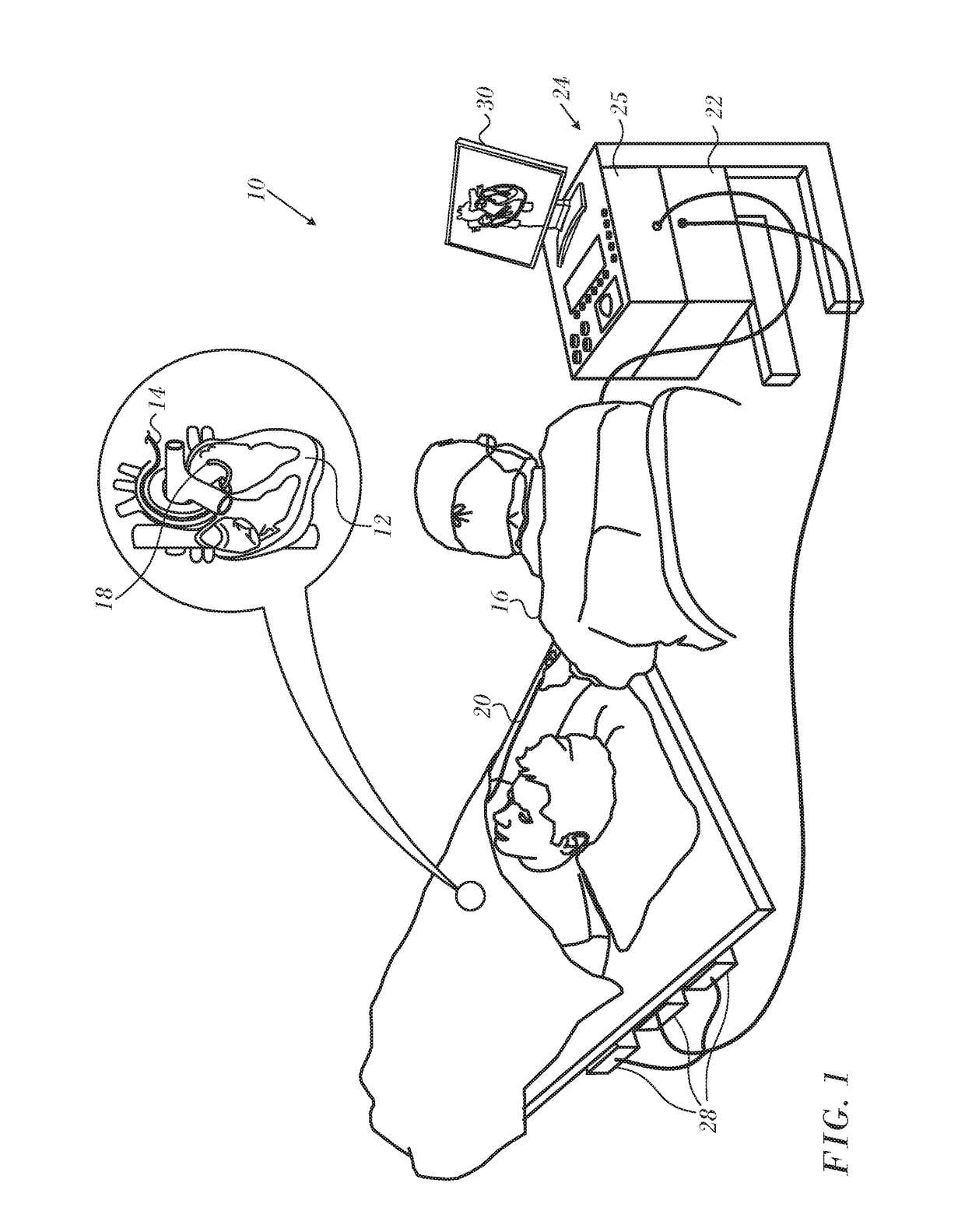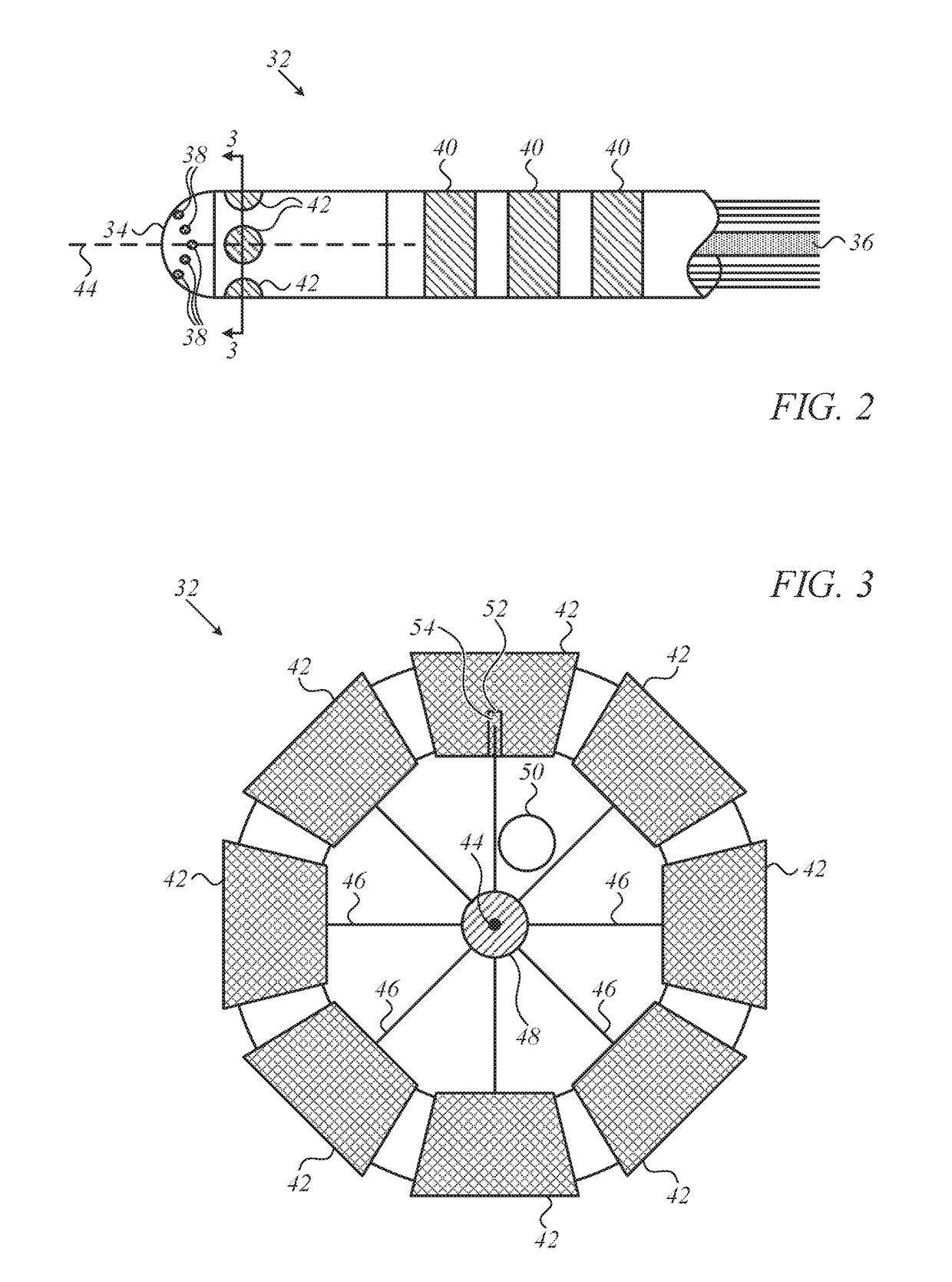Temperature measurement in catheter
a catheter and temperature measurement technology, applied in the field of invasive medical devices, can solve the problems of radiofrequency energy use, undesirable effects of excessive local heating, and the inability to perform medical procedures effectively
- Summary
- Abstract
- Description
- Claims
- Application Information
AI Technical Summary
Benefits of technology
Problems solved by technology
Method used
Image
Examples
first alternate embodiment
[0052]Reference is now made to FIG. 5, which is a schematic diagram of a distal portion of a catheter 88, in accordance with an embodiment of the invention. Mounted on an ablation electrode 90 is a series of microelectrodes 92. The microelectrodes 92 are elongated in the longitudinal direction of the catheter 88, which allows a larger number to be accommodated than is the case with round microelectrodes having the same surface area. The elongated configuration is not essential, and, other configurations of the microelectrodes may be used. The microelectrodes 92 are thermally and electrically isolated from the ablation electrode 90 by an insulation layer 94.
[0053]Reference is now made to FIG. 6, which is a sectional view through line 6-6 of FIG. 5, in accordance with an embodiment of the invention. The microelectrodes 92 are disposed within perforations through the ablation electrode 90. The insulation layer 94 surrounds the microelectrodes 92 and separates the microelectrodes 92 fro...
second alternate embodiment
[0054]This embodiment is similar to the embodiments of FIGS. 5 and 6, except that it is unnecessary to place large perforations in ablation electrode. Reference is now made to FIG. 7, which is a schematic sectional view of a portion of an ablation electrode 96, in accordance with an embodiment of the invention. A microelectrode 98 is embedded in a recess 100 formed in the wall of the ablation electrode 96 and separated from the ablation electrode 96 by a thermally and electrically insulative layer 102. A relatively small perforation 104 extending from the base of the recess 100 through the wall of the ablation electrode 96 carries a wire 106 into the interior of the catheter to ultimately connect to impedance measuring circuitry (not shown).
third alternate embodiment
[0055]In this embodiment electrodes of a lasso, or loop, catheter having capabilities for ablation may be configured for bipolar impedance measurement. Such a catheter is known, for example from commonly assigned U.S. Patent Application Publication No. 2010 / 0168548, which is hereby incorporated by reference. Electrodes in contact with the tissue may be determined as described above.
PUM
 Login to View More
Login to View More Abstract
Description
Claims
Application Information
 Login to View More
Login to View More - R&D
- Intellectual Property
- Life Sciences
- Materials
- Tech Scout
- Unparalleled Data Quality
- Higher Quality Content
- 60% Fewer Hallucinations
Browse by: Latest US Patents, China's latest patents, Technical Efficacy Thesaurus, Application Domain, Technology Topic, Popular Technical Reports.
© 2025 PatSnap. All rights reserved.Legal|Privacy policy|Modern Slavery Act Transparency Statement|Sitemap|About US| Contact US: help@patsnap.com



